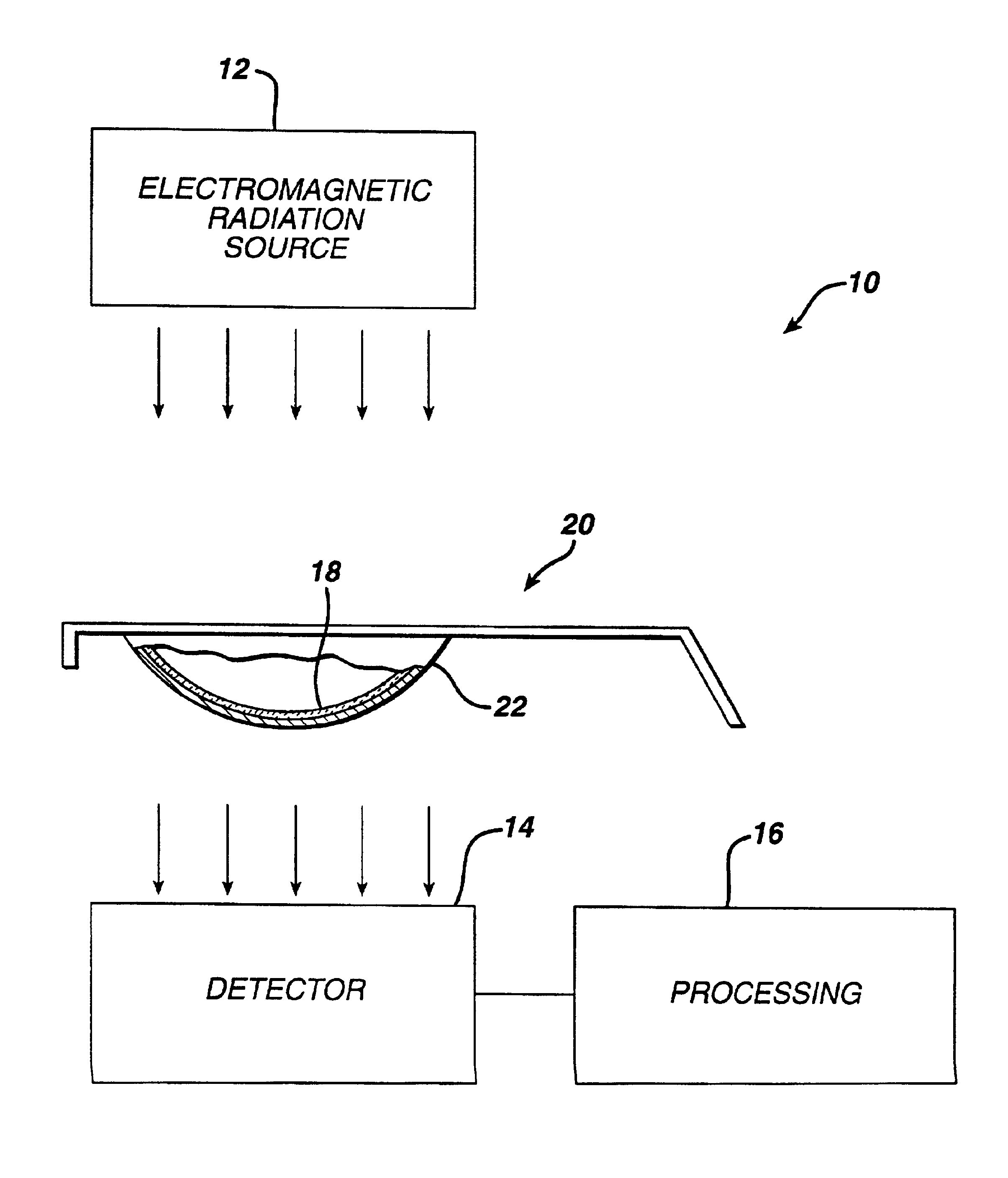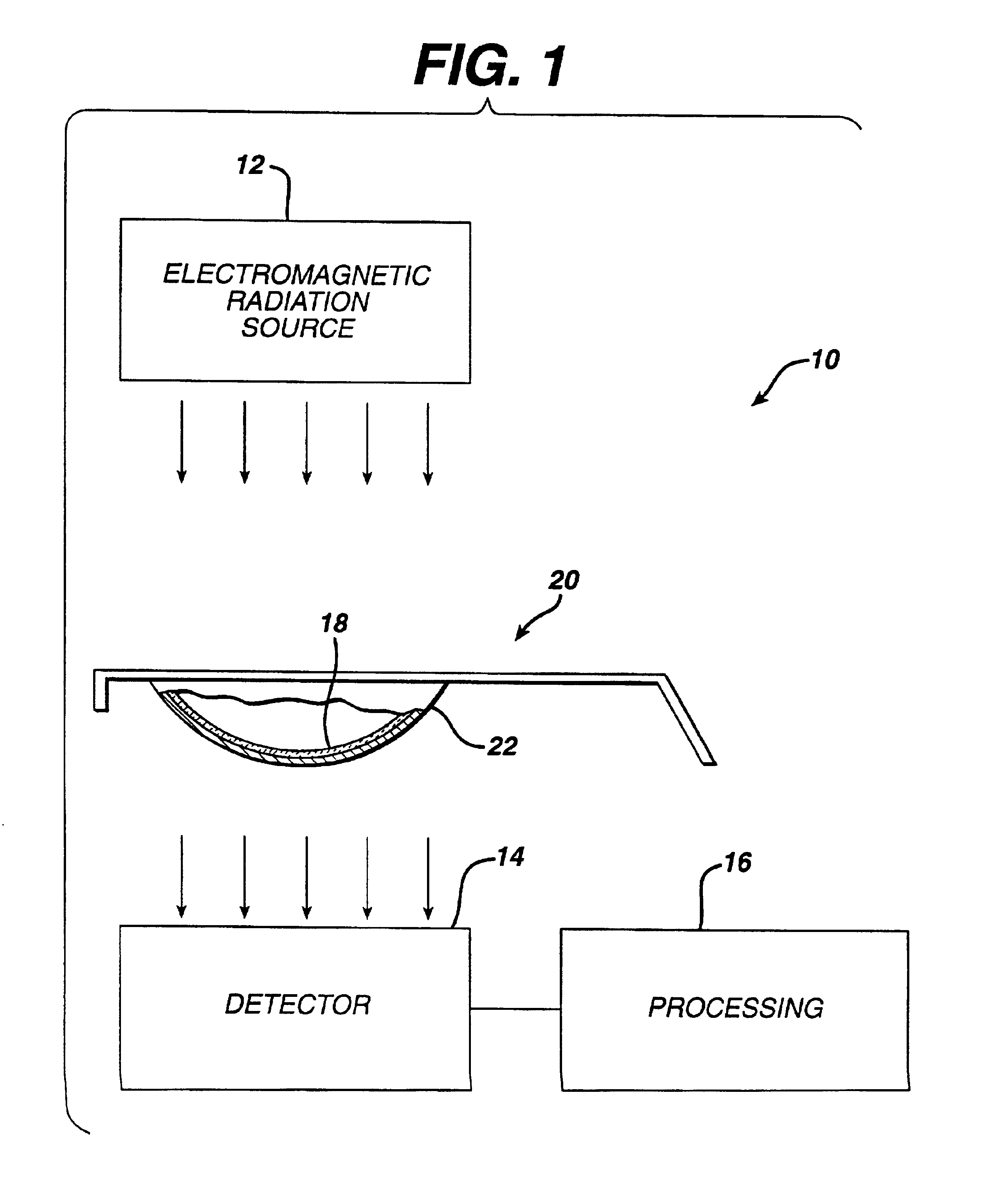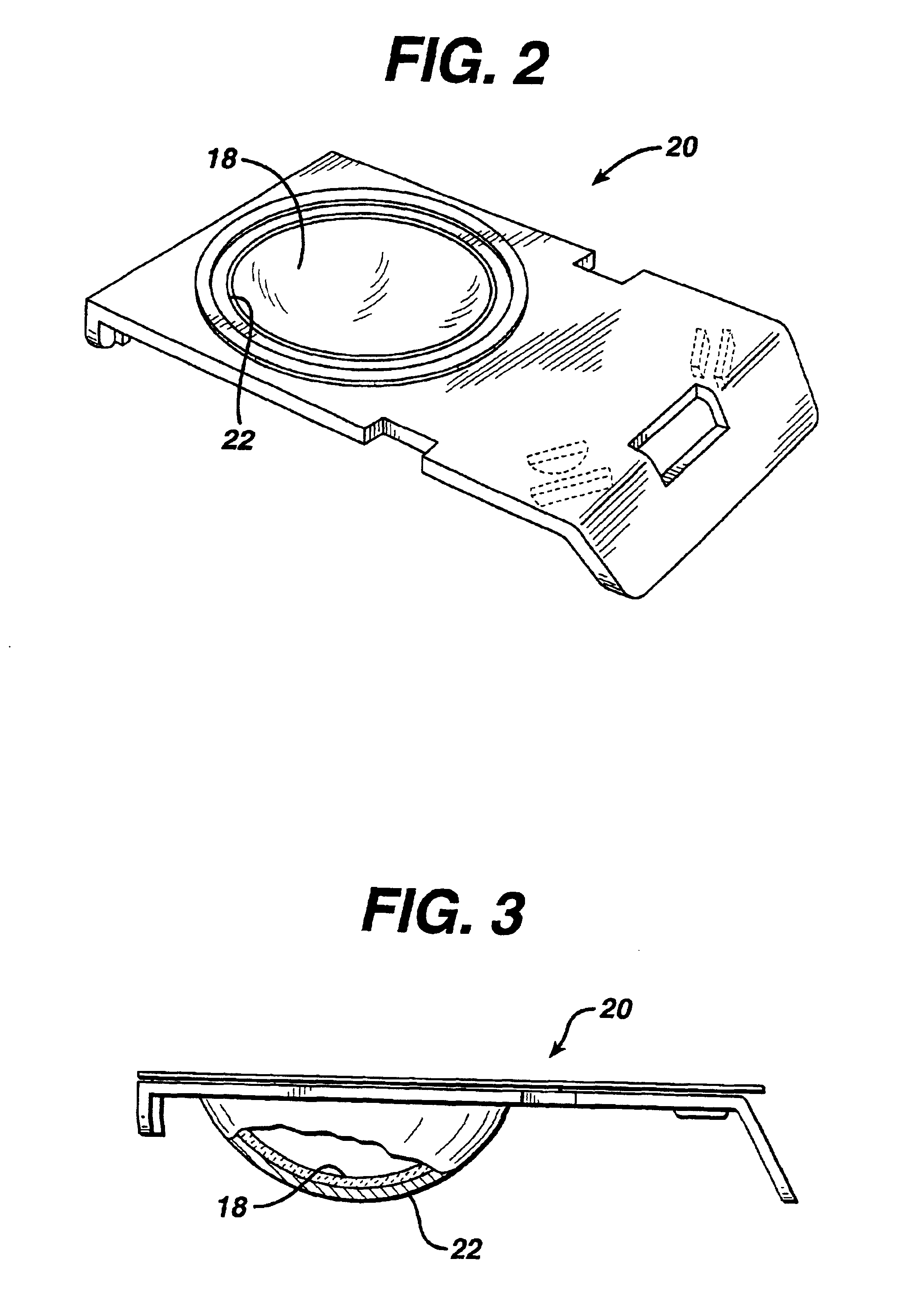Missing lens detection system and method
a detection system and lens technology, applied in the field of missing lens detection system and method, can solve the problems of more than two percent of processed packages being shipped without lenses, high labor cost, and high labor cost, and achieve the effect of simple and economical system
- Summary
- Abstract
- Description
- Claims
- Application Information
AI Technical Summary
Benefits of technology
Problems solved by technology
Method used
Image
Examples
Embodiment Construction
Referring now to the several figures of the drawings, there is depicted a missing lens detection system generally characterized by the reference numeral 10. Referring to FIG. 1, the detection system 10 comprises an electromagnetic radiation source 12 and a detector 14. The source 12 can be a broad-band source which produces ultraviolet light, visible light, and infrared light. For example, a visible light source will produce a portion of the electromagnetic radiation in the ultraviolet band. Alternatively, the source 12 can generate electromagnetic radiation in a narrow band, e.g., ultraviolet (a wavelength or range of wavelengths within about 190 to 400 nanometers). In yet another embodiment, the source 12 can produce electromagnetic radiation in a selected group of ranges such as the ultraviolet and visible band. Similarly, the detector 14 may be responsive to wavelengths of radiation in a particular range, or it may be responsive to broad bands and / or used in combination with a f...
PUM
 Login to View More
Login to View More Abstract
Description
Claims
Application Information
 Login to View More
Login to View More - R&D
- Intellectual Property
- Life Sciences
- Materials
- Tech Scout
- Unparalleled Data Quality
- Higher Quality Content
- 60% Fewer Hallucinations
Browse by: Latest US Patents, China's latest patents, Technical Efficacy Thesaurus, Application Domain, Technology Topic, Popular Technical Reports.
© 2025 PatSnap. All rights reserved.Legal|Privacy policy|Modern Slavery Act Transparency Statement|Sitemap|About US| Contact US: help@patsnap.com



